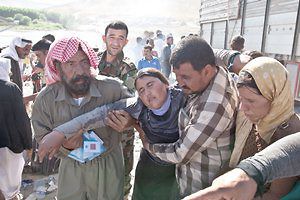This year presents an opportunity for UN member states to specifically invest in and support the participation and leadership of women and girls in conflict prevention efforts.
Tag: responsibility to protect
-
-
We continue to develop new tools to respond to atrocities and yet we keep failing to prevent or stop these crimes. Why?
-
In Syria, the UN is confronted with an uncooperative head of state, bolstered by the support of veto-wielding members of the Security Council.
-
One of the most straightforward and effective measures that could be adopted to fulfill the responsibility to protect is the provision of safe passage and asylum to those fleeing Syrian leader Bashar al-Assad’s barrel bombs and the so-called Islamic State’s beheadings.
-
The international community, including the government of Myanmar and the Association of Southeast Asian Nations (ASEAN), has a responsibility to protect Rohingya Muslims. A declaration issued at a meeting of regional leaders in Bangkok on May 29 provides an important framework for doing just that.
-
Director of the Global Policy Initiative at Columbia University, Michael Doyle, says the number one priority of the United Nations must be to save the lives of those immediately at risk.
-
Even as many debate the legal justification for US-led action against ISIS, the airstrikes are actively advancing the R2P principle.
-
Nearly a decade after its inception at the World Summit, the Responsibility to Protect principle has won the battle of ideas, but there is still much to be done.
-
As ASEAN moves toward closer integration and past a history of mass atrocities, a high-level panel recommends committing to R2P.
-
The US decision to conduct targeted airstrikes against ISIS installations sits squarely with the R2P principle and should be welcomed, though more work on Syria is still needed.














